Last month, we asked Pennsylvanians to send us their #PreservationHappensHere Preservation Success Stories using PA-SHARE to celebrate National Historic Preservation Month. We enticed them with prizes! And we received many great submissions, making our campaign its own success story!
ICYMI
You can read about Preservation Month and our call for stories in this post. A success story is an activity, event, person, organization, place – or something else! – that shines a spotlight on the good things people across the commonwealth are doing every day. The definition of a success story is broad on purpose because we at the PA SHPO don’t believe that there isn’t a single definition or measuring stick of what success looks like when it comes to preserving the older and historic places that matter to us.
Submitters were asked to use PA-SHARE to send in their stories, using the super-simple Success Story wizard on the Submit page. Anyone could access PA-SHARE to send their story, since that wizard is available to users with or without a PA-SHARE account.
All of the submitted stories will be considered for the PA SHPO’s 2021 Community Initiative Award, which we expect to announce later this fall. For the Preservation Month contest, we offered free 3-month PA-SHARE Pro subcriptions to three lucky submitters.
And they are…
Luzerne County Historical Society, Restoration of the Swetland Homestead
Located in the small town of Wyoming, the Swetland Homestead is one of the oldest properties in Luzerne County. The earliest portion of the Homestead was built in 1797 by Luke Swetland who immigrated to Pennsylvania from Connecticut around 1800. Luke’s son and grandson, both prominent figures in the Wyoming Valley through the mid-19th century, expanded the original home with additions in 1803, 1809, and 1813 and modified the main facade in the 1850s.
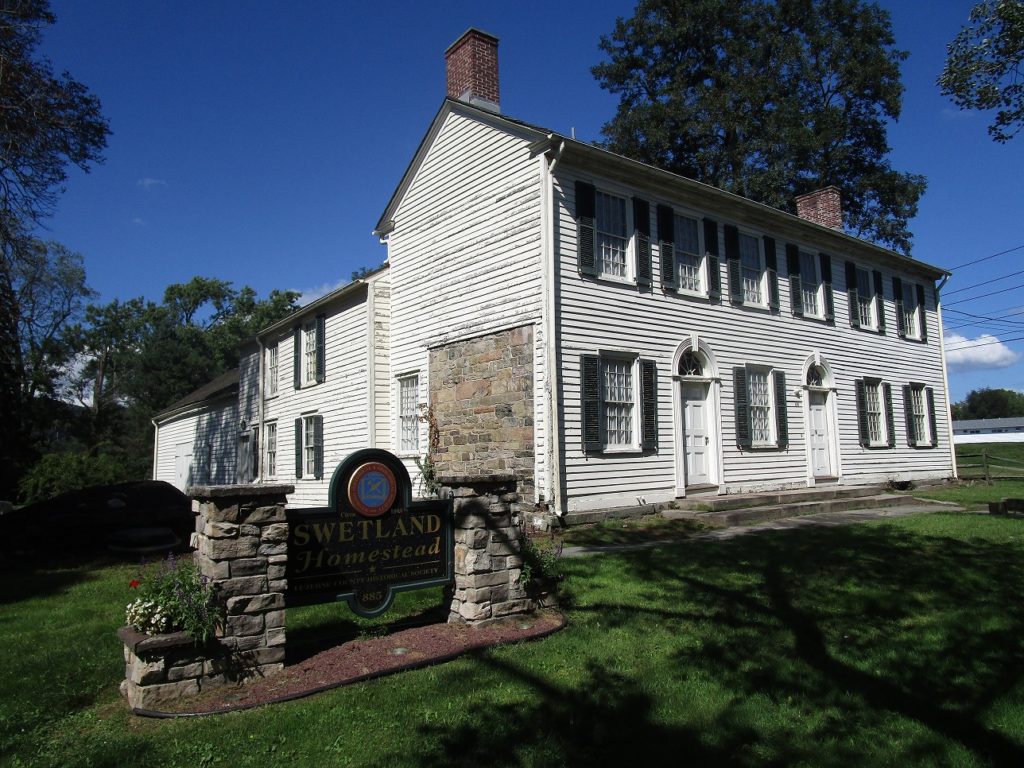
In 1958, the Swetland family turned the property over to the Wyoming Historical and Geological Society (forerunner of the Luzerne County Historical Society) and the Homestead was listed in the National Register of Historic Places in 1973. Since the mid-20th century, the historical society has studied, maintained and operated the Swetland Homestead. In 1997, PHMC awarded the historical society a Keystone Grant and in 1999, the architectural firm of Frens and Frens helped direct the property’s restoration.
Luzerne County Historical Society (LCHS) submitted a Preservation Success Story to highlight the recently finished exterior maintenance and repairs. Beginning in April 2020 and wrapping up in May 2021, carpenters and roofers with Panzitta Enterprises and painters from Postupak Painting scraped and painted the wood siding, replaced rotted and damaged wood trim and shutters in kind, installed a new cedar shake roof, repointed the chimney and improved access with new sidewalks and accessibility ramps.
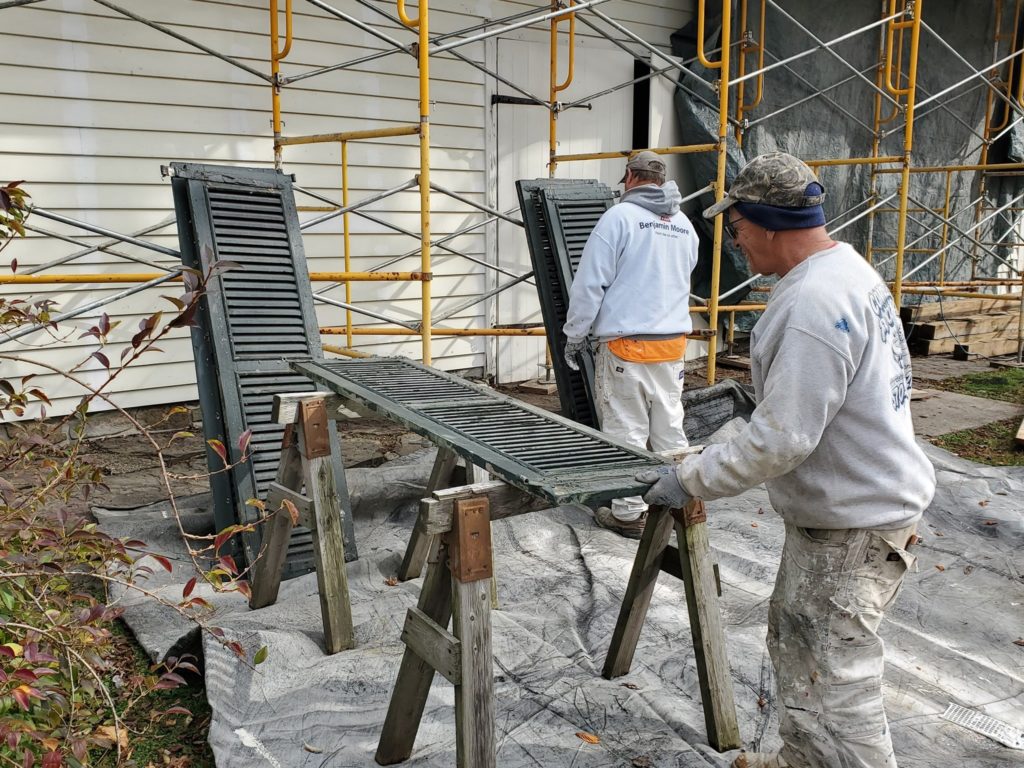
Workers prepping shutters for repairs and painting. Image from Luzerne County Historical Society. 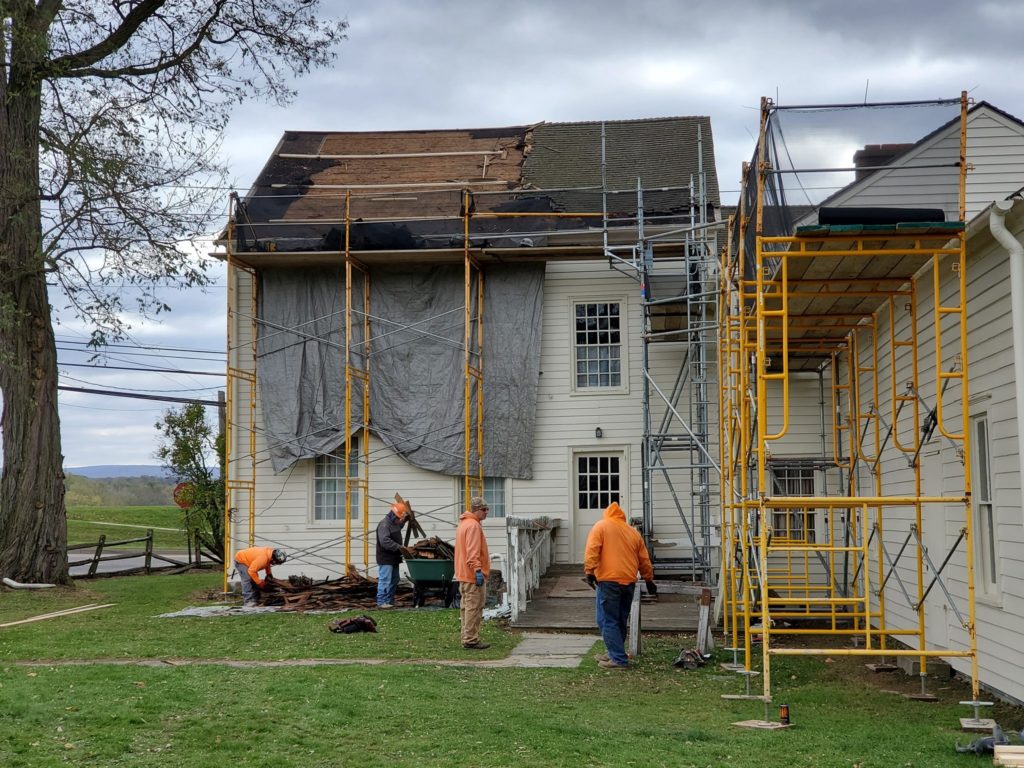
Removing the old roof from the main house. Image from Luzerne County Historical Society. 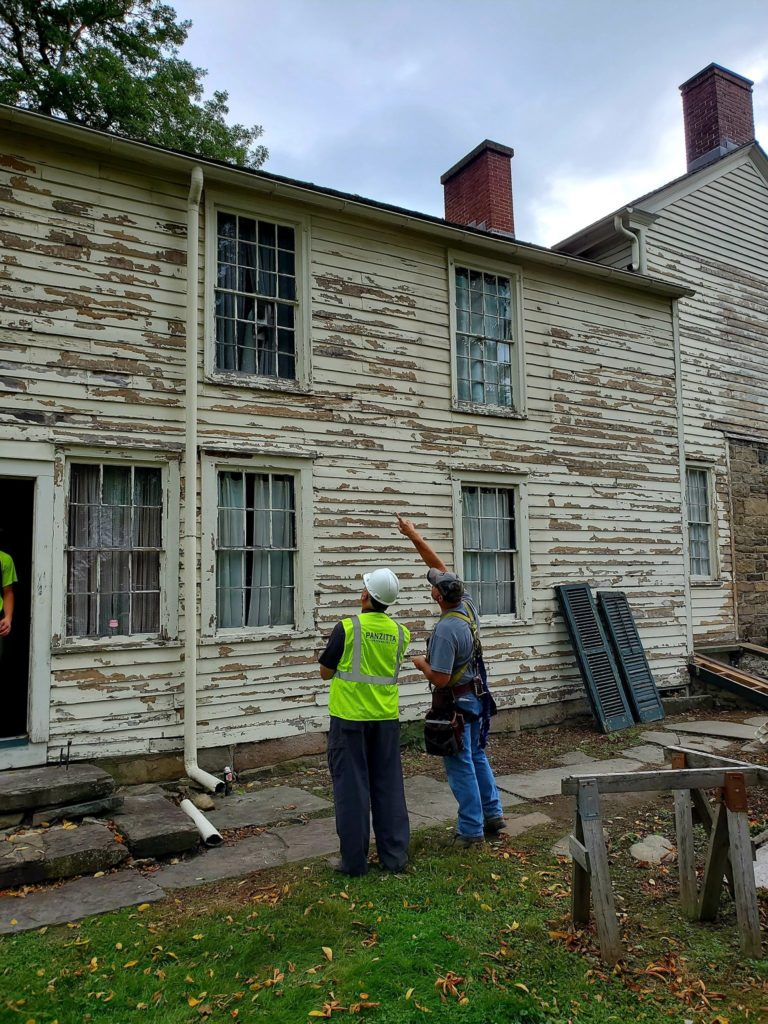
Workers inspect the side of the Swetland Homestead as the painting preparations continue. Image from Luzerne County Historical Society.
This success story is a great example of the importance of maintenance as preservation. By maintaining a sound and water-tight building envelope, LCHS has helped ensure the homestead’s preservation. Congratulations to the Luzerne County Historical Society and thank you for being a good steward of the Swetland Homestead.
Preservation Erie, Success Stories in the Flagship City (and County)
Erie is a hotbed of preservation activity these days, thanks to Preservation Erie, their supporters, residents, community leaders and elected officials who have seen opportunities and promise in this small city on the shores of Lake Erie. You might remember that we featured a post about Erie County’s Cultural Heritage Plan in 2017, which provided “a framework to discuss and shape Erie’s future by pointing out the benefits of preservation: spurring economic prosperity, providing social enrichment, practicing environmental responsibility and educating both students and skilled workers.” We knew then that lots of good things were on the horizon.
Preservation Erie submitted three different success stories to showcase how preservation is happening where they are:
First is the Adaptive Reuse of the Old Swedish Baptist Church. The Swedish Baptist Church was founded in 1895 by a small congregation of only nineteen parishoners. They built their first church in 1907 at Holland and E. 7th streets in Erie and worshipped there until moving out of the city in 1959. In the mid-20th century, the congregation changed its name from Swedish Baptist Church to Grace Baptist Church.
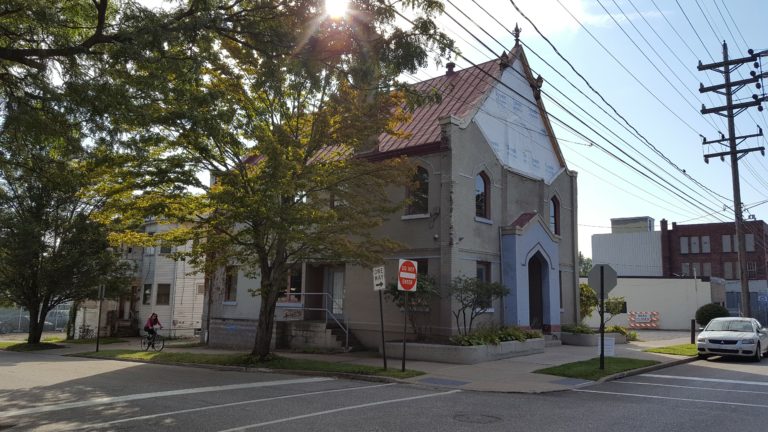
Old Swedish Baptist Church in Erie before rehabilitation. Photograph from Preservation Erie. 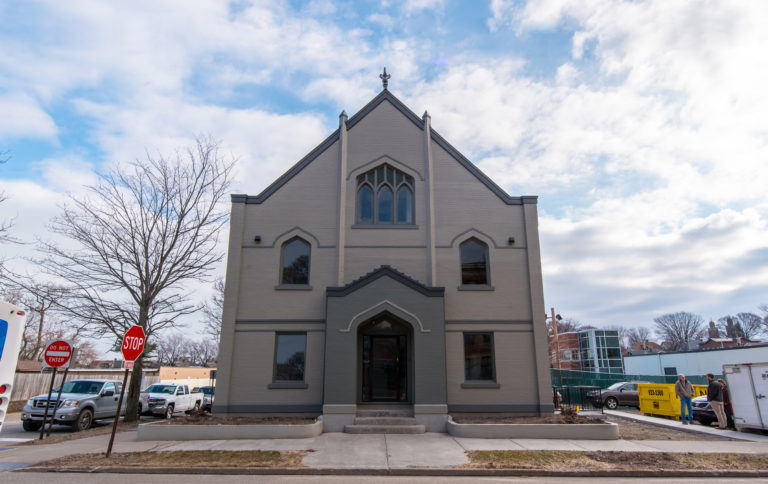
Old Swedish Baptist Church in Erie after rehabilitation. Photograph from Preservation Erie.
Erie Insurance, which is a great supporter of historic preservation, partnered with Grace Church to reinvest in this historic property and revitalize the surrounding neighborhood. The 1907 church at 7th and Holland Streets will soon open as the new home for the Grace Leadership Institute to support Erie’s diverse religious community. Rehabilitation work included exterior masonry work and repointing, repairing and replacing windows, a new roof and painting. The next round of work calls for constructing three floors of classroom and meeting space.
Next is the bank barn restoration at Goodell Gardens & Homestead in Edinboro, a large borough about half an hour south of Erie. The Goodell family moved to their Edinboro farm in 1876 and the family continued to own the 80-acre property through the late 20th century. In 2001, the Goodell Gardens & Homestead was incorporated as a non-profit public garden, accredited arboretum, and community gathering space.
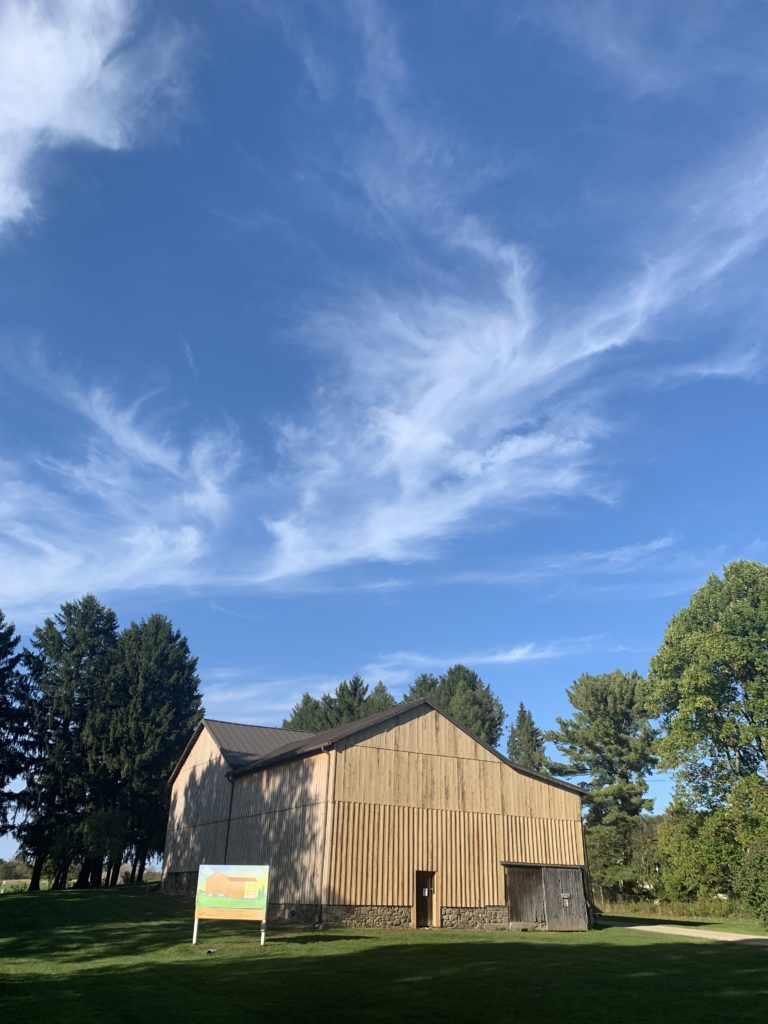
The bank barn is built from two separate buildings – an ca. 1840s barn and a circa 1860s building – that George Goodell moved to a stone foundation on his property in 1885. Starting in 2013, Goodell Gardens began the barn’s multi-year repair and rehabilitation campaign. The work began with a new standing-seam metal roof, foundation repairs, and electrical updgrades. Re-siding work started in 2018 with organization’s “Buy a Board” campaign. Today, the bank barn is preserved as a working barn that represents Erie County’s strong agricultural history, which is quickly vanishing in the rural parts of the county.
The third submission was for the creation of the City of Erie Historic Preservation Program. In January 2021, Erie’s Historic Preservation Task Force issued its final report after two years of research, engagement, and consultation. The task force made the following recommendations to the City to move preservation forward: pursue Certified Local Government designation, create a Preservation Planner position in the City’s Planning and Neighborhood Resources Department, design a citywide survey methodology, create neighborhood preservation toolkits, and develop a plan to support this new preservation program.
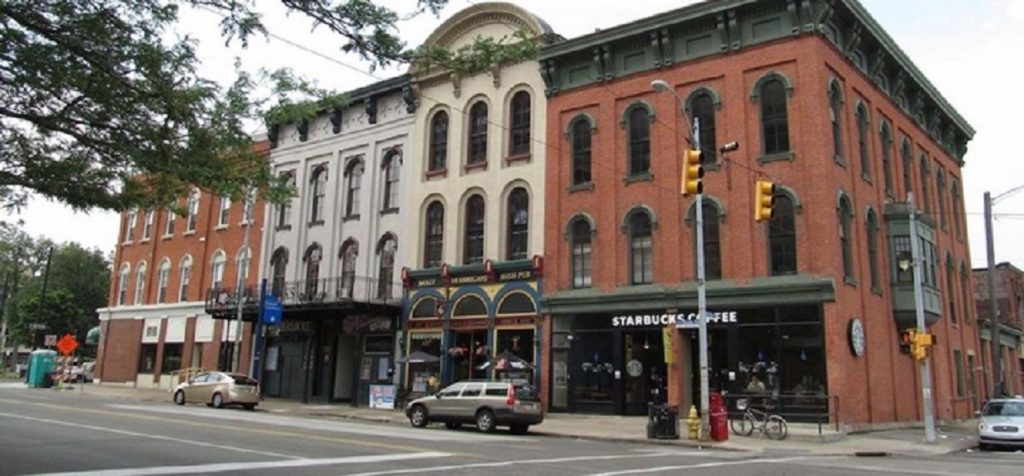
There is lots more to the story of Erie’s new historic preservation program! Later this summer we’ll be covering more of their progress in a blog post focusing on the task force, its recommendations, and early preservation outcomes.
Joanne Tosti-Vasey, Recreating the Beauty on Spring Street
The borough of Bellefonte in Centre County has a strong track record and commitment to historic preservation. In 1970, the Bellefonte Historic District ordinance was adopted – one of the first in Pennsylvania to use the Historic District Act to create a local historic district. In addition to their local district and its Historical and Archictectural Review Board (HARB), Bellefonte has a National Register historic district (1977RE000250), is home to a number of individually-listed National Register properties, and is one of Pennsylvania’s Certified Local Governments (CLG).
In the early 1990s, Joanne Tosti-Vasey and her husband purchased a Victorian-era home on Spring Street within the historic districts. The two-story wood frame house was built in 1865 as the home for Edward and Mary Graham. A 1927 photograph of the house, passed down from owner to owner, showed the original appearance of the house before extensive exterior renovations in 1953.
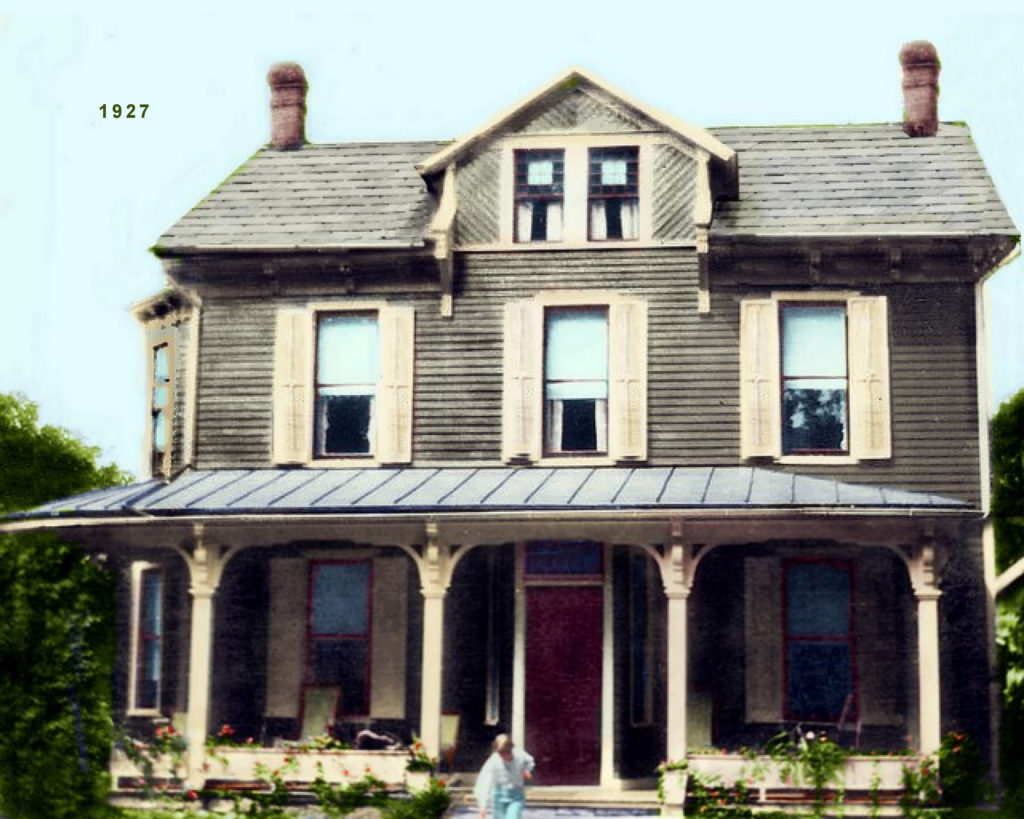
A note found in the houses’s cellar chronicled what changes the owners at the time made, such as removing the front porch, replacing the first floor windows, removing window trim, removing all of the corbels along the roofline, replacing the wood shutters with aluminum shutters and covering the clapboard with cementitious asbestos tile. At some point, layers of wood shingle and asphalt roofing had been added to the building, causing the roof to bow.
Over the next twenty plus years, Joanne and her husband, with the help of knowledgeable craftspeople and tradespeople, worked to restore the home’s 1927 appearance and sensitively upgrade its energy efficiency. Their work included work like: replacing the roof to remove the stresses of too much material and allow the framing to correct; replacing the inappropriate fixed-in-place windows on the first floor with new operable two-over-two double-hung wood windows; installing solar panels on the south and west roofs (becoming the first house in the Historic District to do so with the approval of the HARB); rebuilding the porch and replacing the aluminum shuttesr with wood ones as shown in the 1927 historic photograph; removing the inappropriate asbestos tiles and repairing or replacing in kind the clapboard siding and wood window trim, and recreating over 55 corbels, which had been removed, with new wood corbels based on an original survivor found in the attic.
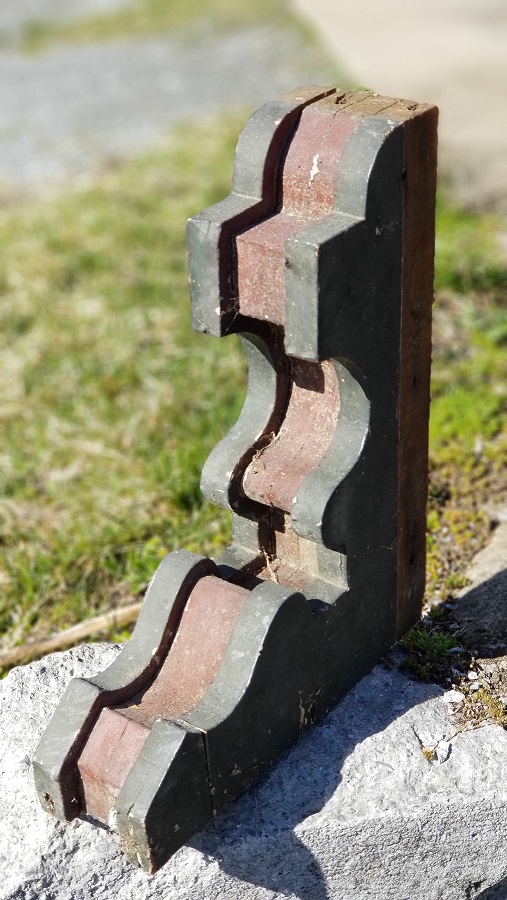
The original Corbel found in the attic in 1992. Image from Joanne Tosti-Vasey. 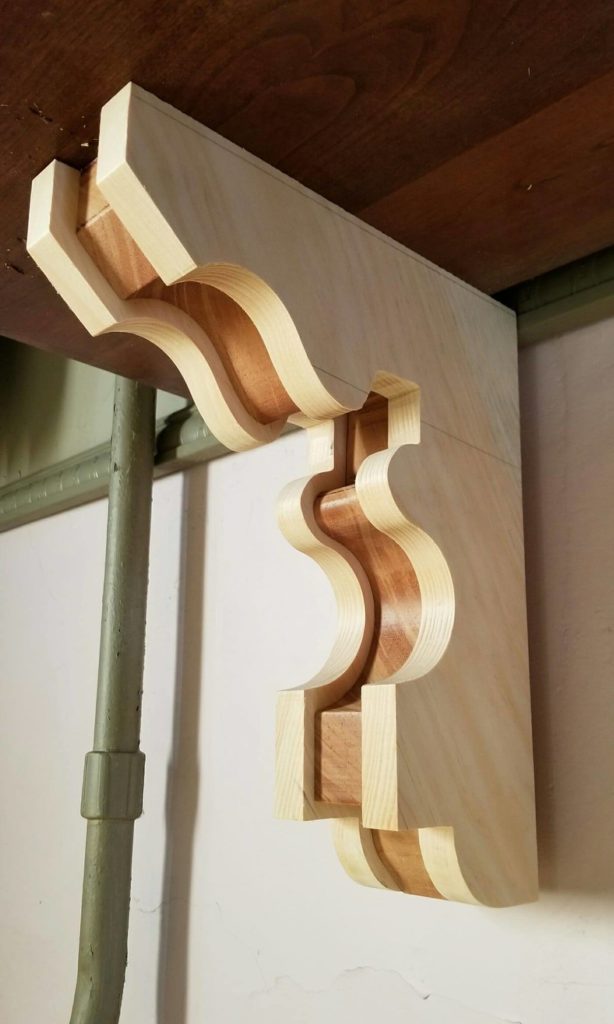
New Corbel sample before painting it 2018. Image from Joanne Tosti-Vasey.
The Vasey’s investment has inspired others in Bellefonte. In her success story, Joanne noted that “Since we started this major renovation, we have seen more home owners coming to HARB with projects to enhance their homes. HARB members have complimented us on the work and said that they hope this will inspire others to create their own beauties.”
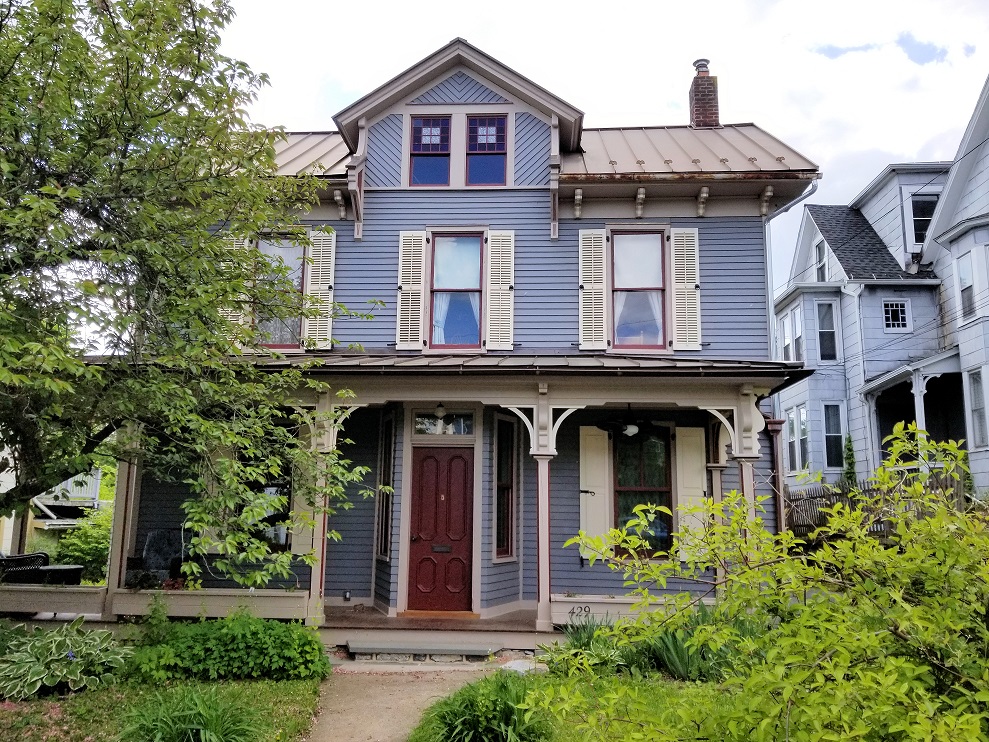
While many people don’t have the resources to invest in a major rehabilitation like this one, things like preserving a historic photograph or original pieces of building fabric is a very important part of a place’s future Preservation Success Story.
Do you have a Preservation Success Story to share with us?
Send us your Preservation Success Stories using PA-SHARE, which is PA SHPO’s new online data management and cultural resources GIS tool. After you’ve clicked “Submit” in PA-SHARE, don’t forget to use the #PreservationHappensHere hashtag in all your social media posts!
All success stories will be automatically considered for a 2021 PA SHPO Community Initiative Award. The Community Initiative Award from the State Historic Preservation Office (PA SHPO) recognizes organizations, municipalities, agencies, individuals, and others whose work embodies the theme of Pennsylvania’s statewide historic preservation plan, #PreservationHappensHere. PA SHPO selects three to four winners from a pool of candidates, typically each fall.
Comment Policy
PHMC welcomes and encourages topic-related comments on this blog. PHMC reserves the right to remove comments that in PHMC’s discretion do not follow participation guidelines.
Commenters and Comments shall be related to the blog post topic and respectful of others who use this site.
Commenters and Comments shall not: use language that is offensive, inflammatory or provocative (this includes, but is not limited to, using profanity, obscene, or vulgar comments); disparage other commenters or people; condone illegal activity; identify the location of known or suspected archeological sites; post personal information in comments such as addresses, phone numbers, e-mail addresses or other contact details, which may relate to you or other individuals; impersonate or falsely claim to represent a person or an organization; make any commercial endorsement or promotion of any product, service or publication.
If you would like to comment on other topics not related to this blog post but related to PHMC, please fill out the PHMC Contact Us Form.
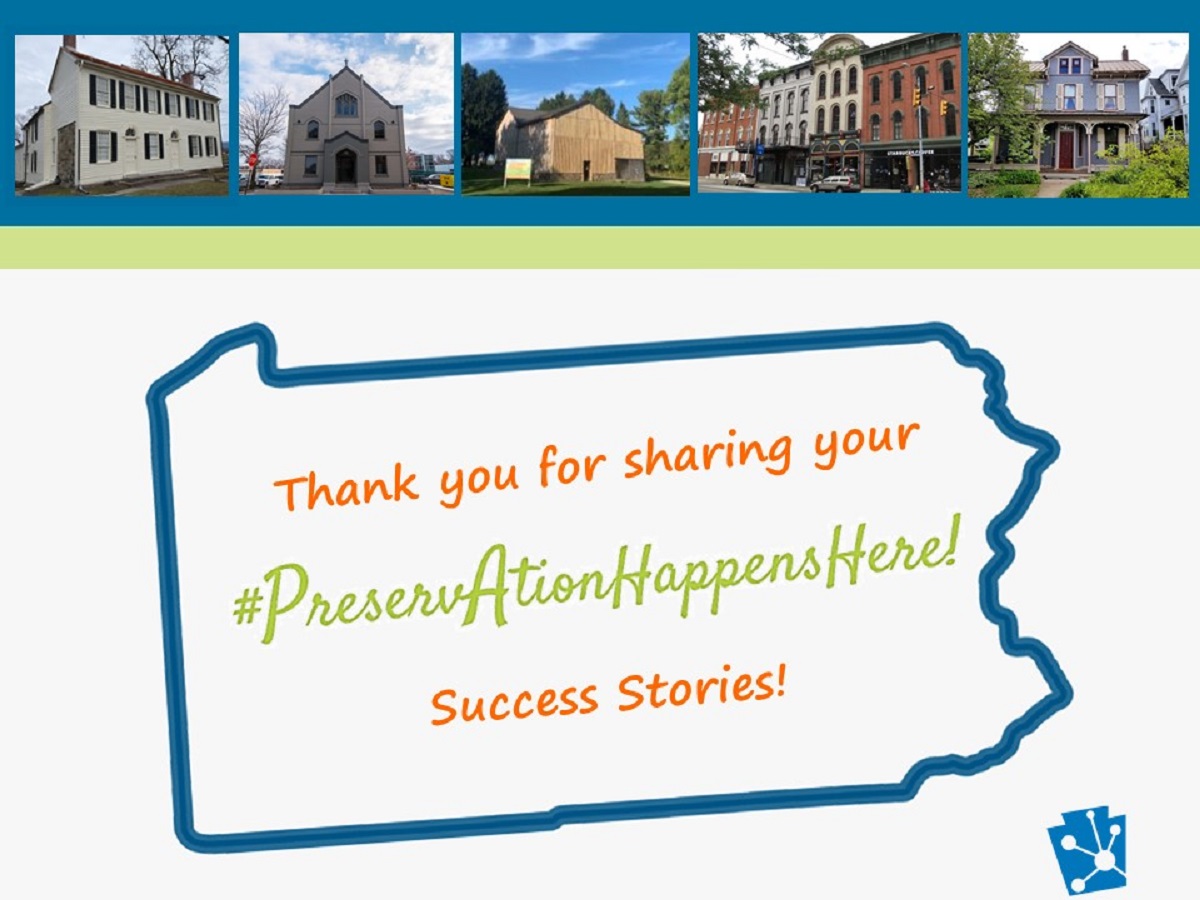
Good Day Shelby Splain, We have a small popcorn/ice cream/coffee roasting shop in Sylvania Pa. Mill Street Coffee Roasting Company formerly (originally) Mill Street Caramel Corn. We’ve been in business since 2014. This message is way premature and probably not where I should start. Just yesterday my neighbor the pastor in this historical ..pretty old church…which is right next to our shop said they are closing down…only have 3 paritioners and they are pretty old….and they would like us to have the church for very reasonable terms. My question to you is ….where should I start researching….the only way we could pull it off is with some help …enough said Thank You. PS my daughter worked a lot with Belfonte community and works for Clear Water in Penn State are